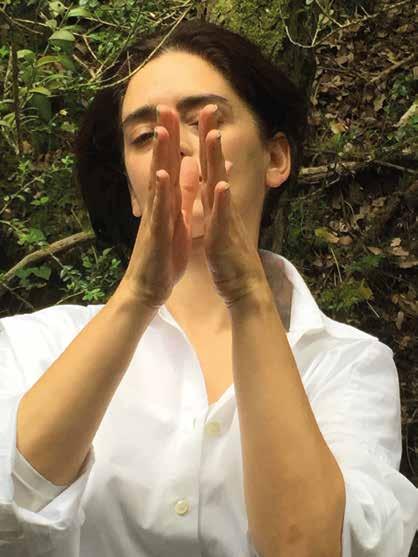
1 minute read
Isabel de Naverán. La ola en la mente. Azkuna zentroa associated researcher
Isabel de Naverán
La ola en la mente (The Wave in the Mind)
Advertisement
Since last February, researcher Isabel de Naverán has been developing La ola en la mente, a proposal focused on somatic writing as a kind of curatorship. Placing special emphasis on corporal perception as a connector of the senses, this project seeks to essay writing, both as a listening device and a research methodology. La ola en la mente, is inspired by a letter Virginia Woolf sent to Vita Sackville-West. In it, Woolf emphasised the importance of finding the correct writing rhythm, a process she compares to the movement of a silent wave starting in the high sea and slowly approaching the seaside. According to her, the task of the writer consists of detecting the movement of said wave as it approaches. With this background image, La ola en la mente starts dialogues and exchanges with a series of artists and researchers whose work is related to choreography, performance, philosophy, sculpture and poetry. The first of these exchanges, with artist Lorea Alfaro (Estella-Lizarra, 1982), is based on an attempt at portraying a state which transforms itself, as explained by Isabel de Naverán. “I’ve invited Lorea Alfaro because of my interest in her sensorial and sensual work with images, and encouraged by the desire to enter into it from a physical and experimental experience. Getting to know each other through what we do implies relying on the fact that our respective manners of doing things are entwined and entangled in material and sensitive relationships. It’s also a form of productive movement through mutual listening. The interest in capturing gestures which are considered fugitive or ephemeral is based on my previous research on dance and choreography revolving around corporal memory and transmission, when they become strained with great History and official omnipotent reports. The correspondence with Lorea Alfaro raises questions regarding the power of corporal states which we could refer to as physical alteration, mutation, and variation, triggering research into other areas. In some way, La ola en la mente deals with making space and allowing time for non-regulated experiences based on sensitive connections via the production of exchanges which, in this instance, are shared as simply as possible: from the production of writing and the production of images.”
Photograph: Lorea Alfaro









